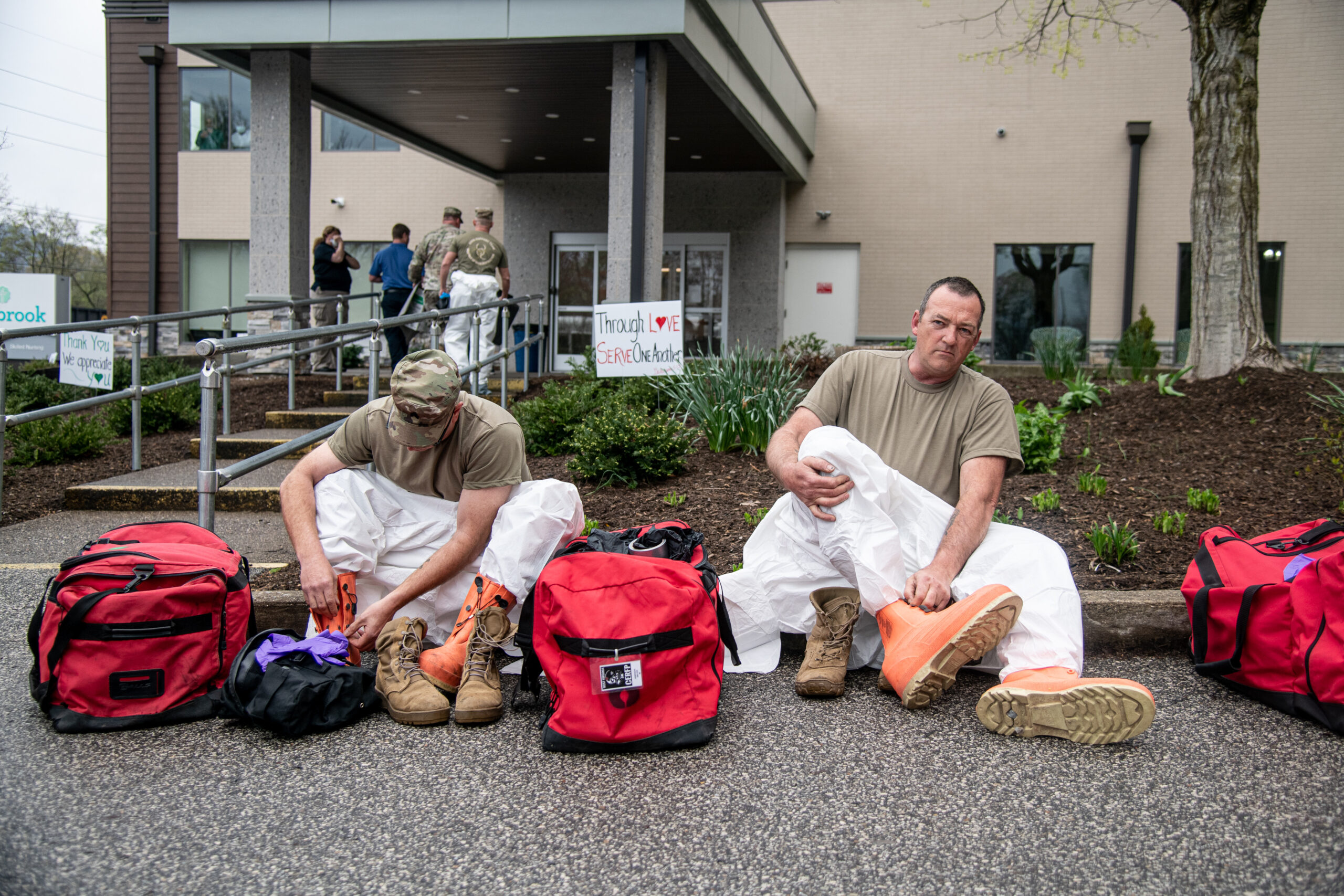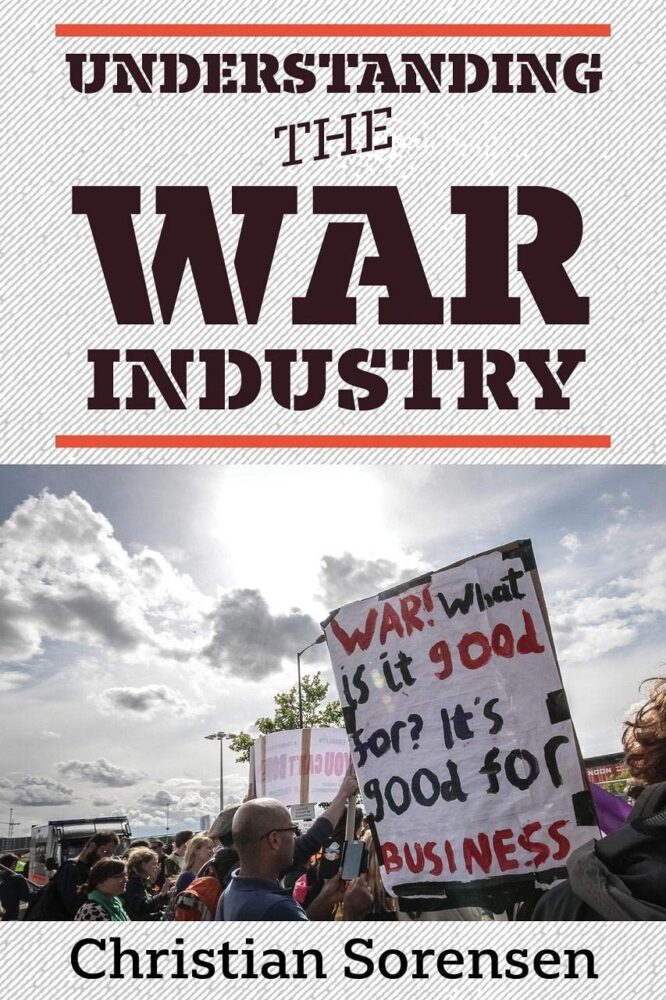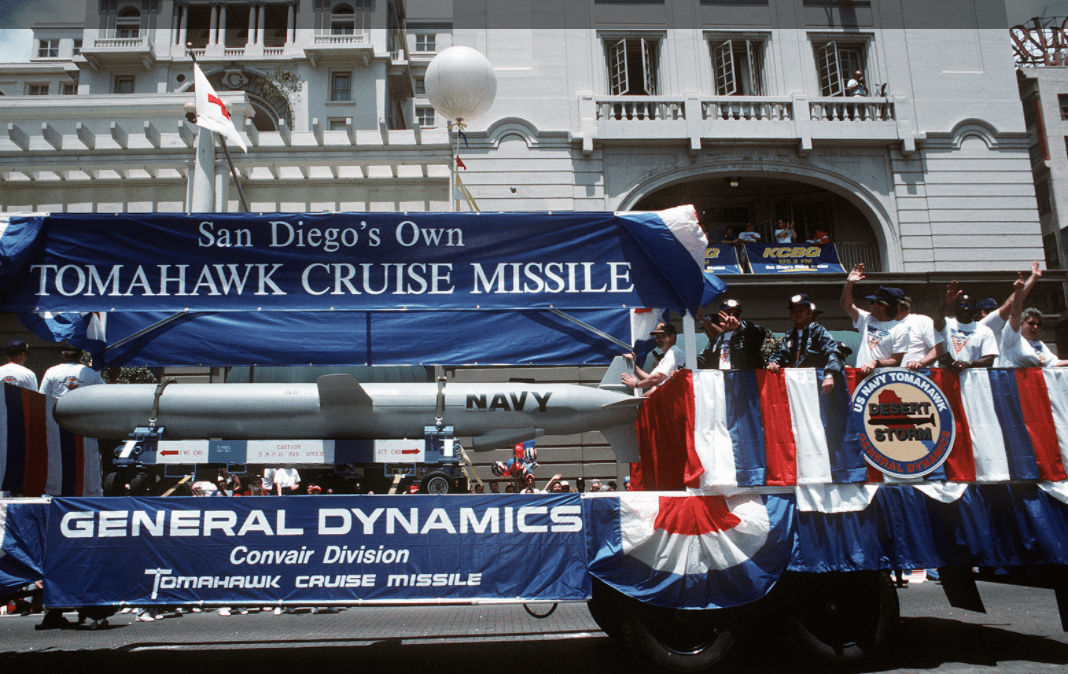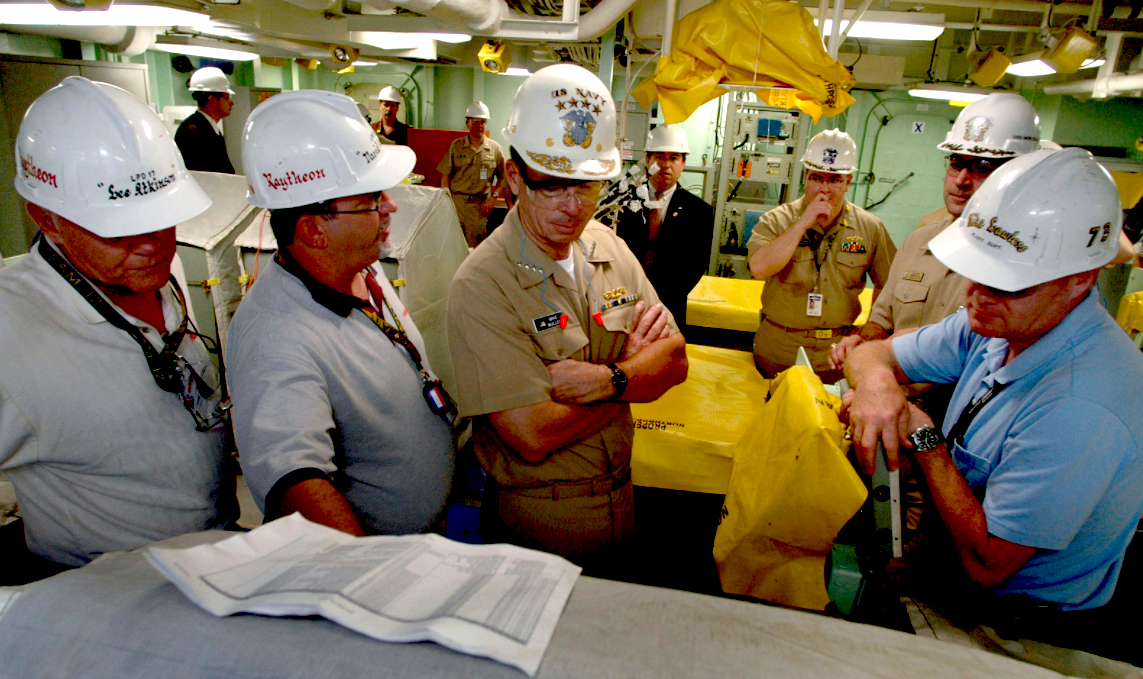Christian Sorensen maps out the global system of weapons mongering. Second in a series of five articles on the U.S. military-industrial-congressional complex. –
Read Part 1.
By Christian Sorensen
Special to Consortium News May 26, 2021
War corporations are spread across the United States. The top war industry hubs in the U.S. are Huntsville, Alabama; greater Boston; greater Tampa, Florida; the Dallas-Fort Worth region; southern California; and the corridor stretching from northeast Virginia, through Washington, to Baltimore (consistently home to the wealthiest counties in the country).
The U.S. war industry profits well through global supply chains, including setting up subsidiaries in allied capitalist countries and using those countries’ industrial bases to produce parts of a weapons platform (such as the costly, underperforming F-35 Joint Strike Fighter, parts of which are built in locations as diverse as Italy and Japan).
War corporations manage global chains by organizing, coordinating, and enforcing a hierarchical command structure upon disparate locations. Orders flow down the chain and capital flows up, allowing the corporation’s executives, and ultimately Wall Street — not workers who make the products — to harvest enormous amounts of wealth. This exacerbates inequality, not just in Lemont Furnace, Pennsylvania, and Marietta, Georgia, but also Rochester, England, and Aire-sur-l’Adour, France — all locations where U.S. war products are made. War corporations paint these actions as “building lasting capacity” and other euphemisms.
A euphemism is a kinder, gentler term used in place of a direct, often more accurate one. The MIC employs euphemisms adeptly. Public relations gurus know the English language very well. Recall George Orwell’s 1946 essay “Politics and the English Language:”
“In our time, political speech and writing are largely the defence of the indefensible… Thus political language has to consist largely of euphemism, question-begging and sheer cloudy vagueness.”
With the care of a sommelier, MIC propagandists select the perfect euphemisms to mask their activities and present death and destruction in comfortable terms. Getting rid of euphemism, pursuing an honest language, is one step toward achieving a system that benefits people and planet.
Globe-Spanning Installations
Military installations are avenues through which corporations route goods and services. Sometimes the U.S. military sets up an installation overseas with permission from the allied capitalist regime. Sometimes the ruling class orders the military to take the land by force. It stole land in Guam, compensating locals a paltry sum or nothing at all. It took the Enewetak Atoll in the Marshall Islands. It stole Vieques, Puerto Rico. It teamed up with the Danish government to remove the indigenous Inughuit to make way for Thule Air Base in northwest Greenland. And the Pentagon and State Department teamed up with the United Kingdom to remove Chagossians from the Chagos Archipelago in the Indian Ocean in order to set up what is now called Naval Support Facility Diego Garcia.
Incredible corporate profit (e.g. base operations, ordnance, platforms, construction, fuel, maintenance) runs through each military installation. Most U.S. military bases overseas are not located in active war zones. The largest concentrations of U.S. troops are on bases in the Persian Gulf, Europe, and the Western Pacific.
RiseUpTimes.org Support independent media. Please donate today and share articles widely.
There are thousands of U.S. military installations inside the United States (land stolen from the Native Americans). As contract announcements indicate, Corporate America is sometimes put in charge of studying and documenting the effect a planned base or weapons range might have on the surrounding community — aircraft noise, potential for mishaps and accidents, and the extent to which land use works with or against local designs — even though Corporate America stands to benefit if the base or range gets established.
Duping Workers

In the capitalist economic system, relatively few people control the means of production (e.g. machinery, factories). In order to survive, most people (the working class) sell their ability to work. They receive a wage in return. A worker’s work is what makes money for the ruling class. This is true across all industries, including the war industry.
Workers who design and assemble the major weapons of war form the core of the working class within the war industry. They put together missiles at Raytheon’s factory in Tucson, Arizona. They manufacture drones at General Atomics’ factory in Poway, California. They fabricate land vehicles at AM General’s factory in South Bend, Indiana. They build landing craft at Textron’s factory in New Orleans, Louisiana. Whatever the workers produce is not theirs to use or sell. Instead, their output belongs to the capitalist class. These rulers (literally sitting in corporate suites) decide what to produce, how to produce it, and to whom to sell it.
Please Support Our Spring Fund Drive!
The ruling class profits by underpaying the workers. A given worker on a given day produces value, which we’ll call A, B, C, D, E, F, and G. The corporation pays the worker a wage comparable to F and G. The rest (A, B, C, D, E) is “surplus value.” This difference between what a worker is paid in wages and the value a worker creates is how the corporation profits.
Those profits go toward executives’ compensation (CEO pay at the top five war corporations totaled almost half a billion dollars over the course of 2015-2019); boost stock price and allow for stock buybacks; and are invested to make more profit. Money used to expand business to increase future profits is functioning as capital. An example of this is General Dynamics building a 200,000-square-foot building for submarine assembly at its Groton, Connecticut, shipyard in order to make more goods to sell for profit.
The ruling class inundates the working class with various forms of advertising, public relations gimmicks, propaganda, and disinformation in order to keep the working class (which greatly outnumbers the ruling class) passive and compliant. Many within the working class have swallowed such deception.
Working class jobs within the war industry are various, and include administrative assistant, analyst, armed mercenary, astrophysicist, data officer, engineer, lawyer, lobbyist, linguist, mathematician, public relations specialist, technician, and tradesperson. From the haughtiest academic to the humblest welder, what propaganda have they seized in order to justify working in the war industry?
Lockheed Martin’s director of communications once said, “The missile has nothing to do with the manufacturer… Lockheed Martin was not the one that was there, firing the missile” (Robert Fisk, Independent, May 18, 1997).
Civilian Use

But these are ancillary benefits. Imagine what technological benefits society could achieve if $750 billion per year was directed intentionally toward research and development of technology that benefits human wellbeing and the natural world, not military and war.
We can harness the human mind in many ways. Nonetheless, so far — by the numbers — the U.S. government has only spent significant monies on military and war. Try throwing that kind of money at the sciences and arts every year — via other federal departments, such as Interior, Agriculture, Health & Human Services, Transportation — and see where unpressured, non-militarized research and development lead.
Distancing
Lockheed Martin’s director of communications once said, “The missile has nothing to do with the manufacturer… Lockheed Martin was not the one that was there, firing the missile” (Robert Fisk, Independent, May 18, 1997).
Such distancing is no different from an engineer at a U.S. university who justifies her work on nuclear weapons along the lines of, “Well it’s not me pushing the button. Surely, there are military professionals in charge of these weapons.” Other workers in the war industry rationalize by arguing, “I might disagree with the wars, but I’m not the one elected to make such decisions. I’m just doing my job.” Those who resort to distancing focus on their own daily, incremental tasks, blocking out all consequence.
Traditional Patriotism
Traditional patriotism rallies a person around the flag and shuns holding authority to account. Traditional patriotism allows the wars to continue. True patriotism, however, involves questioning government, making government accountable, and changing government when it is polluted and corrupt. True patriotism, as retired Major Danny Sjursen puts it, is “participatory and principled.”
Support the Troops

Some people justify working for the war industry by saying they do it for the troops. Journalist Jeffrey Stern describes how one machinist at a missile factory rationalizes his role:
“[T]he thing that he said made him most proud about working at Raytheon was helping to keep American servicemen and women safe. The company makes a point of hiring veterans with combat injuries, which reminds him of whom he’s working for and why. He feels it when he sees the gigantic photos of service members that the company hangs in the most prominent parts of the plant. The photos, he explained, are of relatives of Raytheon workers. When he’s at work, the notion of helping American servicemen and women is not abstract. It’s almost tactile.”
Well played, Raytheon! The phrase “support the troops” is a clever slogan through which the MIC throws a blanket of patriotism over the underlying issue: supporting the wars. “Support the troops” has been very effective in getting the working class to line up in favor of war.
Delusion & Moral Bankruptcy
Many people within the war industry are deluded or morally bankrupt and therefore have no problem working in such a destructive industry. Delusion and moral bankruptcy are the direct result of decades of refined capitalist propaganda and indoctrination. Many workers don’t understand that the system exists because of their exploitation. Many don’t understand that the war industry exists as a means of profit. Nor does the increasingly privatized and standardized public-school system emphasize the critical thinking needed to alter such a sad state of affairs.
Lack of Courage
Many smart people, blissfully comfortable with the paycheck that being part of the war industry work brings, lack the courage to act. Consider one plucked at random from the middle ranks of a war corporation. The man’s résumé is impressive: degree from a prestigious university, awards from industry and the Pentagon, and not one ounce of moral courage. His participation in the war industry leads directly to the deaths of innocents abroad and perpetuates war.
This flexible, powerful recipe allows one to justify working in the war industry.

A few people within the MIC recognize the gravity of the situation — that funneling so much money toward military, espionage, and war has a negative effect on U.S. security because it drains manpower, time, and capital, and forestalls social care — but are afraid of the consequences of speaking up.
Group think, hierarchy, compartmentation, economic incentive, and chain of command enforce the status quo. Violence and social isolation deter the few who push back against the machinery of war. The minor whistleblower is ostracized and demoted, the leaker fined and locked up. When just a few people push back, the MIC crushes them. When the working class pushes back, united and together, the MIC has a problem on its hands.
The ruling class employs other devices to ensure the workers continue to sell their labor power. Divide and conquer is a popular device: pit the workers against one another, profiting the capitalist while exhausting the worker. Wedge issues, such as race and nationalism, further split the working class along arbitrary, divisive lines, as seen when U.S. workers buy into the demonization of Arab, Persian, or Chinese workers.
Capitalists also elevate a few workers here and there above other fellow workers (think of the foreman in a Virginia shipyard or a taskmaster in an office producing signals intelligence software). These elevated few are given a tad more money in exchange for keeping the majority of the workers in line.

Replacing workers with machines and automating jobs keeps the workforce desperate. With so many people unemployed and underemployed, capitalist rulers get to pick the most passive laborers for war industry jobs, the ones who will keep their heads down and not raise a fuss about the relative pittance they’re paid. Purchasing the necessities of life (e.g. food, exorbitant healthcare, sky-high rent, utilities) requires that workers continue to sell their labor (the products of which maim and kill the working class in other countries) through which the ruling class becomes fantastically wealthy.
Academia
Education in the United States exists within narrow confines. The working class educated in elementary and secondary schools are not given the opportunity to learn about capitalism, let alone the horrific nature and devastating effects of the U.S. war industry. They are not taught about how the interests of the ruling class (including the Pentagon’s leadership, industry executives, Wall Street financiers, and Congress) clash head-on with the interests of the working class. An uneducated population will not mobilize effectively against its oppressors. This atmosphere of ignorance greatly benefits the MIC.
The war industry and the Pentagon fund extensive science, technology, engineering, and math (STEM) initiatives across the U.S. and in allied countries. By attracting students into STEM careers, the war industry and the Pentagon prepare and safeguard their future. Industry promotion of STEM lays the groundwork for future design, engineering, and production capacity, while the Pentagon promotes STEM in order to foster a technologically literate workforce and future generations of enlisted troops who are capable enough to operate the war industry’s products. STEM efforts are comprehensive, covering a wide geographical area and all ages, from elementary through university.
Many universities in the United States are part of the U.S. war industry. The role of these academic institutions is threefold: research and develop technology, serve as a holding station (e.g. Harvard’s Belfer Center) for MIC elites before they rotate into government or corporate suites, and accept philanthropy from war profiteers thereby whitewashing capitalist brutality. The main academic participants in the war industry include but are not limited to the Massachusetts Institute of Technology (MIT), Johns Hopkins University, Stanford University, the University of Dayton, and Georgia Tech.

The U.S. government runs many research labs pursuing military and intelligence R&D. The Army Research Lab and the Intelligence Advanced Research Projects Activity are located in Maryland. The Defense Advanced Research Projects Agency (DARPA) and the Office of Naval Research are in Arlington, Virginia. The Air Force Research Lab is run out of Wright-Patterson Air Force Base, northeast of Dayton, Ohio, with branches in New Mexico and upstate New York. The U.S. Army Corps of Engineers’ Engineer Research & Development Center is in Vicksburg, Mississippi. Most work in and for these labs is carried out by corporations and academic institutions, not uniformed military personnel.
A report by the Government Accountability Office (GAO) issued in September 2020 detailed, “DOD does not know how contractors’ independent R&D projects fit into the department’s technology goals.”
“Brain drain” happens when industry herds intelligent people toward purposes of war, like when a graduate of an engineering school goes to work for a war corporation instead of a municipality. Humanity thus loses skilled human beings as a result. Brain drain is a great tragedy, and the war industry’s biggest success. In Boston, the U.S. Air Force alone funds ninety different research projects, according to the Air Force Secretary. And that’s just the publicly declared actions of one branch of the military in one city.
Lockheed Martin alone employs nearly 50,000 scientists and engineers, according to its CEO in her presentation to the Society of Women Engineers. Imagine if these minds were working on problems and projects for the betterment of humanity and the planet, instead of devising more ingenious ways to surveil or murder. Imagine the possibilities.
Effective science is based on free, open discussion. Military funding and stipulations (compartmentation, shoehorned focus, classification, near-term deadlines, stove-piped fields) oppose free, open discussion. Breakthroughs benefitting humanity rarely happen when people are tied to military-industry funding priorities, schedules, and narrow cognitive confines. Military and industry shun and condemn the polymath, the free thinker, and the uninhibited tinkerer. Military and industry embrace and fund the careerist, the complicit academic, the rigid functionary, the greedy corporatist, and the aspiring bureaucrat. Military-industry science may possess strong minds, but it does not often make the scientific breakthroughs society needs.
Influence
Strategy involves establishing priorities, making choices, and then matching available resources to goals, means to ends. Capitalists running the war industry utilize a five-step strategy to capture government:
- Pull retiring military officers into war corporations
- Stack the deck by placing ex-industry officials in the Pentagon’s leadership
- Finance congressional campaigns
- Lobby creatively and expansively
- Fund think tanks & corporate media
War corporations recruit retired high-ranking military officers. War corporations use these eager retirees to open doors, influence policy, and increase sales. Generals and admirals retire from the U.S. Armed Forces and then join war corporations where they set to work converting their knowledge (about the acquisition process, senior military and civilian leaders, long-term military policy, and how the Pentagon works) and connections into profit.
Corporate jobs for these retired officers include manager, vice president, lobbyist, consultant, and director. Only a small number of 3- and 4-star officers declines this systemic corruption. War corporations have plenty to pull from, as there are more generals and admirals in uniform today in 2021 than there were at the end of World War II. Mere issuance of a bulletin announcing the hiring of a former high-ranking general or admiral often leads to a boost in stock price.
U.S. military officers benefit professionally and financially from implementing MIC aggression. There is no downside for high-ranking officers who support nonstop war. They’ll soon retire with full benefits, and likely go work for a war corporation. Officers who make it to the highest military ranks are very good at conforming to the system.
These officers support nonstop wars of choice and broad military deployments, and defer to pro-war pretexts and jargon coming from industry think tanks and pressure groups. They judge military activity in terms of numbers (dollars spent, weapons purchased, bases active, troops deployed) instead of clear soldierly goals.
Many officers are unable or unwilling to distinguish between the needs of a war corporation and the needs of a professional uniformed military. These U.S. military officers don’t see war corporations; they see a total force in which military and industry work together. An officer who dissents in a forceful manner risks their career. As the MIC crafts pretexts to justify its own existence and expansion, officers who go against the system from the inside are isolated, shed, or spit out.
Reality is difficult to stomach: There is an absolute dearth of class consciousness and moral courage within the Pentagon. The upper ranks of the U.S. Armed Forces are rife with a caliber of officer predisposed to seek out profit and reward upon retirement.
Executives move smoothly from corporations to the Pentagon, particularly the sundry civilian offices (secretary, deputy secretary, and assistant deputy secretary). These men and women who run the Pentagon have been raised in an environment of profiteering; they are steeped in corporate thought; their allegiance is to corporate success. They bring with them their industry contacts and an exploitative ideology. They turn to corporate products when presented with a military problem. They benefit professionally and financially.
Boeing veteran Pat Shanahan, while serving as deputy defense secretary, in the cockpit at Joint Base Lewis-McChord, Wash., 2017. (DoD photo by Air Force Tech. Sgt. Brigitte N. Brantley)
Industry executives, the most rapacious of the capitalist class, enter “public service” and influence programs and policies. This invariably boosts the profits of former industry employers, who, thenceforth, capture and direct more of the U.S. military establishment. (Such actions, profit invested to make more profit, is money functioning as capital.)
Giant corporations finance the campaigns of people running for congressional office. Those people, once in office, help out the corporations. Washington is so corrupt that they’ve basically legalized this process — they’ve legalized bribery. In Buckley v. Valeo (1976), the U.S. Supreme Court ruled that limits on election spending are unconstitutional; in Citizens United v. Federal Election Commission (2010), the Supreme Court distorted the First Amendment’s free speech clause, allowing corporations to spend unlimited amounts on political contributions; and in McCutcheon v. Federal Election Commission (2014), the Supreme Court got rid of limits on the total number of political contributions one can give over a two-year period.
We are told that the Supreme Court defends liberty and provides a check against the executive and legislative branches, however, the function of the Court, as its rulings demonstrate, is to abet corporate authority and financial interest in line with what the Executive and Legislative branches pursue.
The war industry targets both houses of Congress, particularly elected officials on relevant committees (Armed Services, Appropriations, Intelligence, Foreign Relations). The war industry finances many political action committees, or PACs. These are tax-exempt organizations that aggregate donations to fund political campaigns or influence federal elections. Super PACs (a.k.a. independent expenditure-only committees) allow unlimited contributions. Funding congressional campaigns directly impacts the way U.S. elected officials vote.
Politicians and their war industry bosses are proficient at claiming the “defense” industry creates jobs. Take caution when a war corporation throws the word “jobs” around. Many of these jobs are part-time, temporary, or menial (e.g. painter, welder, roustabout), parsed out to an increasingly desperate workforce. Some are construction jobs that vanish in a year or so. Working-class jobs in the war industry are often in difficult conditions.
Industry jobs that pay very well typically require advanced degrees, which the majority of the population does not have. Furthermore, some jobs are non-U.S. jobs (e.g. microchips manufactured overseas). Other jobs are induced (e.g. the mom making less-than-minimum wage on a ridesharing app driving an industry executive from work to a pub, or the waiter at a St. Louis restaurant where a missile engineer dines). Industry inflates job tallies. The goal is to confine the congressional side of the MIC, which cites the inflated jobs numbers and goes along for the ride.
The claim that the “defense” industry brings jobs is a stale public relations ploy. It hides the truth: Spending on healthcare, education, or clean energy creates more jobs than spending on the military.
The war industry can inflate job numbers because there is no accountability coming from Washington: Capitol Hill is largely content letting Corporate America police itself. Readers are likely familiar with cases where corporations get to inspect their own product (e.g. the airline industry, the pork industry) instead of external government inspectors doing the job.
Corporations policing corporations is rampant in the war industry, like when the advertising agency GSD&M measures the effectiveness of its own efforts at recruiting working class youth into the military. Sometimes one corporation polices part of industry, like when Calibre Systems conducts “cost and economic analysis of major weapons system programs and associated acquisition/financial management policies and procedures.”
Christian Sorensen is an independent journalist mainly focused on war profiteering within the military-industrial complex. An Air Force veteran, he is the author of the recently published book, Understanding the War Industry. He is also a senior fellow at the Eisenhower Media Network (EMN), an organization of independent veteran military and national security experts. His work is available at War Industry Muster.
The views expressed are solely those of the author and may or may not reflect those of Consortium News.




